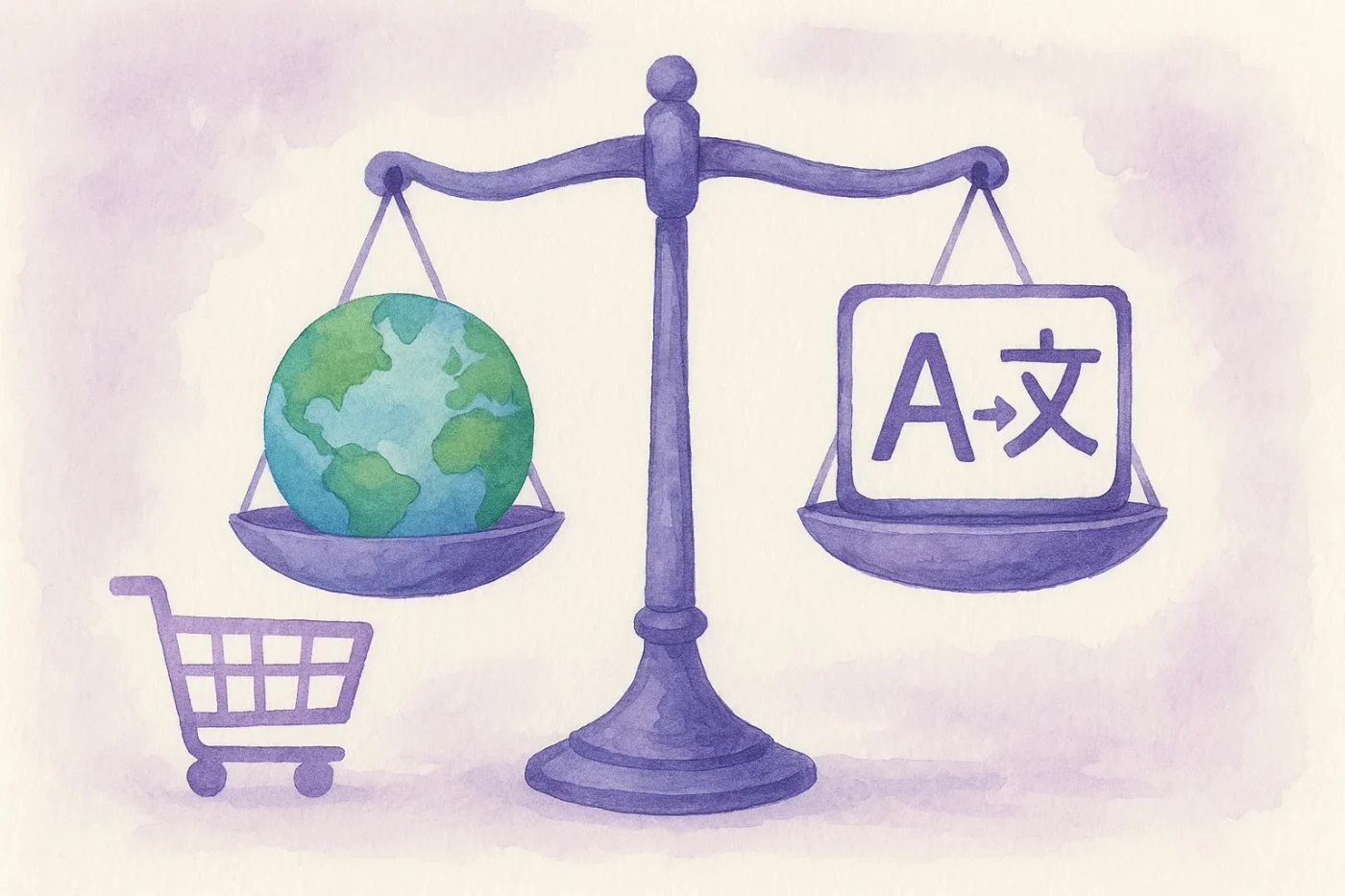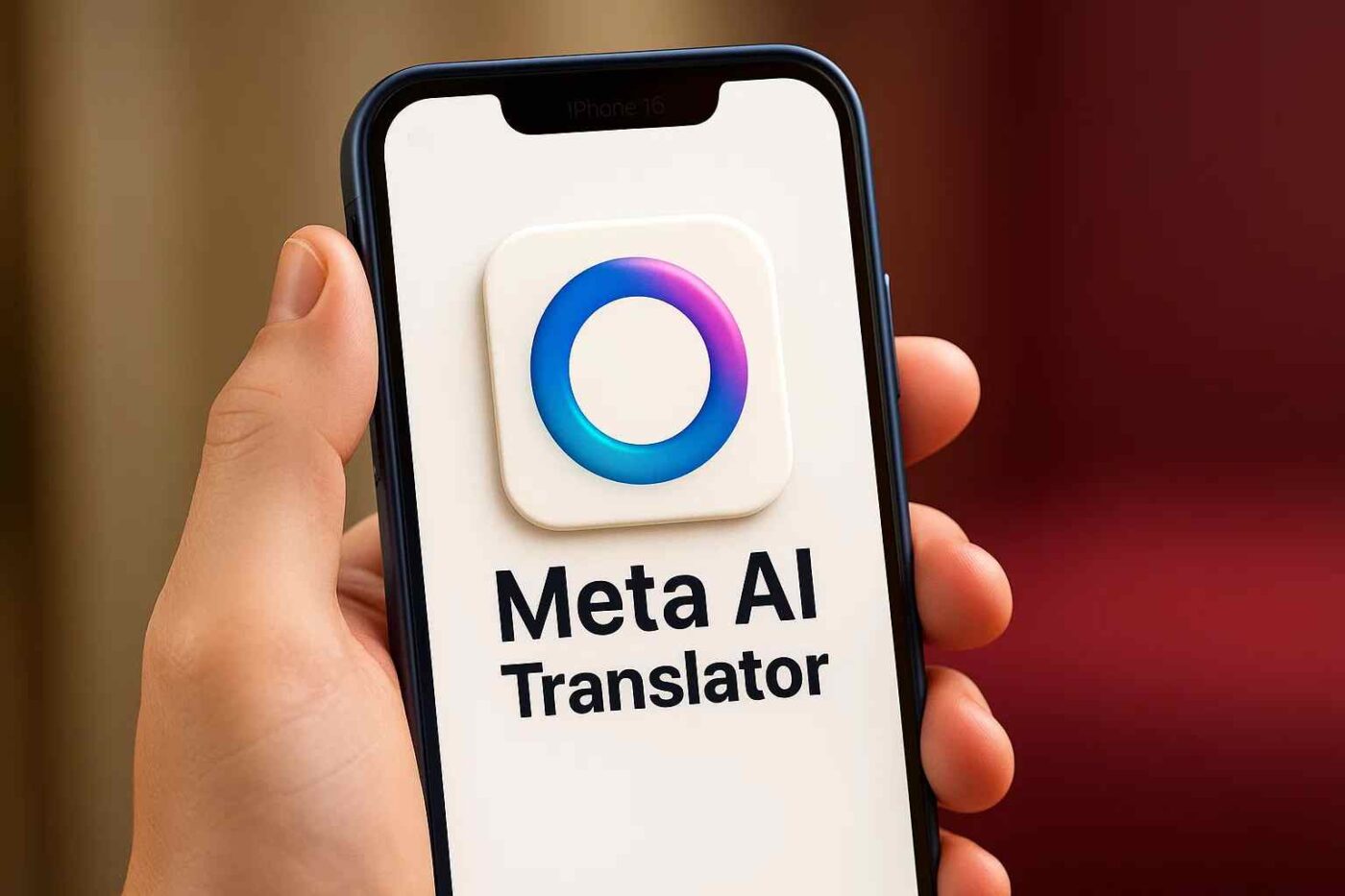Localization vs. AI Translation: What E-Commerce Brands Get Wrong

The global e-commerce market isn’t just growing, it’s exploding, and there’s a fight in each marketer’s head Localization vs AI Translation?
Cross-border online sales are projected to hit $7 trillion by 2030. And yet, in the mad dash to “go global,” countless brands trip over the same invisible wire: language.
You’d think translation would be the answer. Plug your product copy into an AI translator, hit “convert,” and voilà, global-ready content, right?
Not quite.
There’s a critical distinction that gets lost in the race: translation vs. localization.
One is about swapping words; the other is about creating a fully resonant, culturally attuned experience.
Most e-commerce brands confuse the two, and pay for it in low conversions, sky-high bounce rates, and international markets that never quite “click.”
In this post, we’re unpacking the costly misconceptions.
You’ll see where brands go wrong, why AI translation alone isn’t enough, and how smart localization (yes, powered by AI and humans) can completely change your global game.
Translation ≠ Localization
Let’s start with the basics: Translation is the act of converting words from one language to another.
Localization? That’s the art of making those words, and everything around them, feel like home in the target market.
Here’s how that difference plays out in practice:
| Aspect | AI Translation | Localization |
|---|---|---|
| Focus | Direct language conversion | Cultural adaptation + language |
| Scope | Text only | Text, visuals, layout, currency, sizing, UX |
| Audience Fit | Broad and literal | Deep cultural relevance and emotional connection |
| User Experience | Technically functional | Naturally intuitive and immersive |
| SEO Optimization | Basic keyword matching | Localized search intent + regional keyword targeting |
| Conversion & Trust | Moderate at best | High, due to familiarity, fluency, and cultural fluency |
Translation tells your story. Localization tells their story using your product.
Now let’s talk results:
- SEO: AI translation might technically hit your keywords, but only localization understands intent. In Japan, people search differently than in Brazil, and localized SEO meets them where they are.
- UX: Translated interfaces often feel clunky. Localized content blends with a user’s expectations, reducing friction and increasing time on site.
- Trust: If your copy sounds off, or worse, offensive, you lose the sale. Localization builds familiarity and emotional comfort. It’s the difference between sounding like a tourist versus a native.
Put bluntly: Translation gets you into the room. Localization gets you invited to stay.
4 Mistakes E-Commerce Brands Keep Making
Global scale shouldn’t mean cutting corners. Yet time and again, brands fall into the same traps, trading short-term convenience for long-term confusion.
Let’s break down the four most common localization blunders, and why they cost more than you think.
1. Over-Relying on AI Translation
AI translation tools are fast. Slick. Free. But here’s the catch: Quick ≠ Quality.
Automated translation lacks nuance. It can’t read the room.
One slip of syntax, and your sleek product description becomes a punchline.
Example: A U.S. brand marketed a “beef jerky subscription” in Germany.
The AI translated it literally into “Rindfleisch-Abo”, which read more like a cattle feed contract than a tasty snack box.
Result? Confused users. Zero trust. No sales.
2. Ignoring Cultural Context
Translation tells people what you’re selling. Localization shows them why it matters.
This isn’t just about language, it’s about cultural codes. From colors and symbols to checkout flows and customer expectations, every market speaks its own unspoken language.
- Red means “sale” in the West; in some Asian countries, it implies danger.
- A swimsuit ad in Saudi Arabia? Instant bounce.
- One-size-fits-all sizing charts? Expect high return rates and angry reviews.
3. Skipping Human Review
AI doesn’t understand brand tone. Or irony. Or slang. It can’t tell when a phrase lands awkwardly, or offensively.
Linguistic QA (LQA) ensures your copy doesn’t just read right, it feels right.
Your brand voice matters, especially in high-conversion zones like product pages, checkout, and email sequences.
Miss the emotional tone, and you’re just another faceless shop.
4. One-Size-Fits-All Localization
Rolling out the same assets to Spain, Mexico, and Argentina? Rookie move.
Each market has unique expectations, regional dialects, legal requirements, and buyer behavior.
Localized doesn’t mean translated once, it means tailored every time.
Brands that go deep on local nuance see:
- Better engagement
- Higher CTRs
- More repeat customers
Generic localization gets you visibility. Smart localization gets you love.
The Case for Smarter Localization vs. AI Translation
So what’s the fix? Not abandoning AI, but elevating it.
Why Real Localization Wins
This isn’t theory. Brands that invest in true localization report:
- +70% conversion rates in local markets
- Lower return rates due to clear sizing, accurate expectations
- Better organic traffic, thanks to intent-matched keywords and content structure
Localization isn’t overhead. It’s revenue infrastructure.
AI’s Role: Speed, Scalability, Personalization
AI isn’t the enemy, it’s your force multiplier.
- Speed: Translate content across 27 markets in hours, not months.
- Scalability: Push promotions, update SKUs, and localize product lines without bottlenecks.
- Personalization: AI-driven platforms adapt layouts, prices, and even copy based on regional behavior.
But here’s the secret: AI is only as good as the humans guiding it.
The Hybrid Model = Global Gold
Smart brands blend AI efficiency with human intelligence.
- AI does the heavy lifting.
- Humans do the fine-tuning: tone, emotion, intent.
- Together, they create content that’s not just understood, but embraced.
The future isn’t one or the other.
It’s both.
If you’re looking into Multilingual Marketing, please make this your next read: Marketing with AI Translation: Smarter Localization at Scale
Conclusion
Translation is where global ambition begins. Localization is where global success happens.
If you’re still treating AI translation as the finish line, you’re leaving revenue, and reputation, on the table.
The brands winning today aren’t just speaking new languages. They’re speaking to people, on their terms, in their context, in their culture.
So here’s the move: Audit your global content.
Are you really localizing, or just translating?
Because customers know the difference.
Frequently Asked Questions
1. What’s the difference between localization and AI translation?
AI translation focuses on converting words from one language to another, usually quickly and literally.
Localization goes further. It adapts not just the language, but the cultural context, imagery, design, and user experience to resonate with a specific audience.
Think: “translated” vs. “relatable.”
2. Localization vs. AI Translation?
No, not yet, and not for high-stakes content.
AI is great for speed and scalability, but it lacks emotional intelligence, cultural sensitivity, and brand nuance. Human review is still essential for quality assurance and authentic customer connection.
3. Why is localization important for e-commerce SEO?
Localized content ranks better in region-specific search engines.
It captures local keyword intent, adapts to linguistic nuances, and improves user engagement, all major SEO signals. Simply translating keywords won’t cut it if they don’t reflect how local audiences actually search.
4. How does localization improve conversion rates vs ai translation?
When customers feel like your store “gets” them, they buy more.
Localization enhances trust, reduces friction, and boosts clarity. Whether it’s sizing guides, payment methods, or culturally relevant messaging, tailored experiences lead to higher conversions and lower returns.
5. What are the best practices for combining AI and human localization?
- Use AI to scale translation across products and pages.
- Layer in human editors for voice, tone, and cultural accuracy.
- Create style guides and glossaries to ensure consistency.
- Run local QA testing before launch.
- Measure and iterate based on regional performance metrics.
The winning formula?
AI for speed. Humans for soul.





